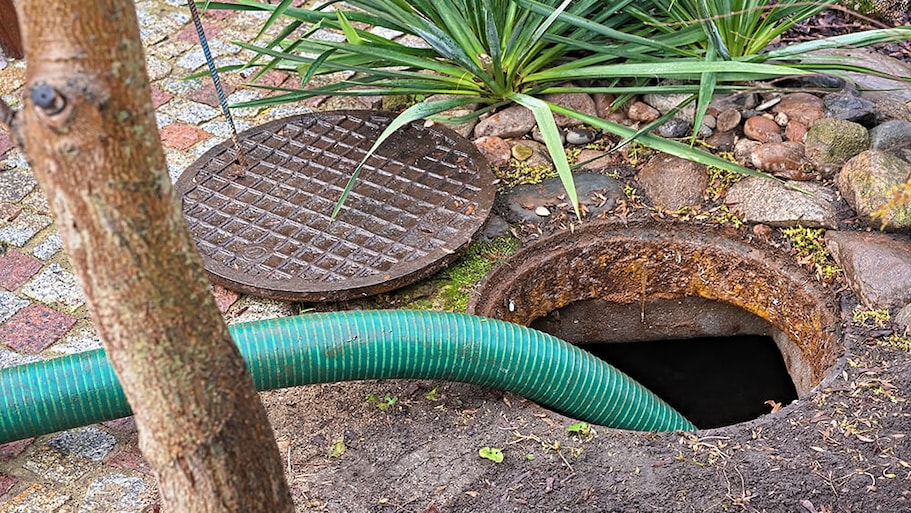How Long Does It Take to Replace a Septic Tank?
Don’t flush your time down the toilet


It takes anywhere from one to eight weeks to replace a septic tank.
Installing a new tank only takes around a week.
Replacing your whole system will take four to six weeks.
Time depends on the type of septic system, extent of damage, and local regulations.
Most homeowners need to replace their septic tank every 20 to 30 years.
How long does it take to replace a septic tank? It’s not as simple as just cracking into new ground. There are a lot of moving parts and a little red tape.
In a perfect world, you can swap out the tank in around a week—provided you don’t hit a snag. If you need to replace other components in your system along with the tank, expect your local septic tank installation company to tackle the job in four to eight weeks.
This guide will show you how long it takes to replace a septic tank, from planning to your first flush.
Breakdown of Time to Replace a Septic Tank
| Task | Time to Complete |
|---|---|
| Testing | 2 – 3 weeks |
| Obtaining permits | Varies |
| Planning/excavation | 2 – 3 weeks |
| Septic tank installation | 5 – 7 days |
Testing Before Installation

Time: Two to Three Weeks
Your septic tank works in conjunction with a leach field, also known as a drain field. If your septic system is leaking waste and contaminating the area around the tank, you’ll need to replace both components—at minimum. If there is extensive damage, you may need a full system replacement. This will push the job into the four- to six-week range (not to mention the cost of a new septic system can exceed $11,000 on the high end).
For this reason, contractors run a percolation test before they replace your tank. This will give them insight into your soil’s texture, volume, consistency, and ability to filter wastewater. It’s an essential part of prep and takes around two to three weeks.
Obtaining Permits
Time: Varies
Before your contractor can replace your septic tank, they’ll need to obtain a permit. Typically, permits are issued by your local health or environmental department—and you’ll typically need one or more building permits.
Sometimes, homeowners also need a permit for pumping and disposing of waste if they don’t already have one. Depending on your local government, this could take a few days or weeks and usually require the percolation test and an inspection.
Planning and Excavation
Time: Two to Three Weeks
During this phase, a septic system engineer will plan the replacement. This could be simple if they just need to swap out a tank, but it could take longer if they also need to plan for a new leach field or entirely new system (to dig safely, they’ll need to map out underground utilities).
Once the plans are finished, the excavation begins. A team will need to dig out your old septic tank and any other components that you plan to replace. Overall, planning and excavation takes around two to three weeks, but it could take more or less time. If the ground freezes or the weather is poor, it will push the project back.
Tank Installation
Time: Five to Seven Days
Installation is typically the quickest part of the job. During this phase, your contractor will install your new septic tank and other components. If you’re installing an aerobic tank, this could mean additional electrical circuitry. If you have a pumped system, this could mean replacing the dosing tanks. It all depends on the type of septic system and the condition. Generally, installation takes five to seven days. It could take longer if you hit a snag like poor weather conditions.
When to Replace Your Septic Tank
A well-maintained septic tank could last 20 to 30 years before it needs a replacement—but rest assured, that day will come. If your septic system is failing, there are usually a few signs. You might need to replace your tank if:
You notice sewage backing up into toilets, sinks, showers, and bathtubs.
Your sinks, bathtubs, and showers drain very slowly.
You see standing water or notice damp spots around your septic tank.
You smell sewage around your septic tank.
The grass around your septic tank is noticeably darker or more vibrant than the rest of your lawn and feels spongy (sewage can actually act as fertilizer).
Proper septic tank maintenance is the best way to increase the life span of your system. Inspect your system every one to three years and pump your tank every three to five years. If you notice any issues, call a septic tank repair service near you and fix the problem sooner than later.





- How Often Does a Septic Tank Need to be Inspected?
- You Just Had Your Septic Tank Pumped and It’s Full Again. Now What?
- How to Check If a Septic Tank Is Full: 7 Easy Ways
- Here’s What to Put in a Septic Tank to Break Down Solids
- Septic Tank Installation Requirements: 8 Steps to Install a Septic System on Your Property
- How to Find Your Septic Tank in 5 (or Fewer) Simple Steps
- Why Septic Tank Pumping Is Crucial for Maintaining Your System
- How Often to Pump a Septic Tank: What You Need to Know
- What Is a Septic Tank and How Does It Work?
- What to Do After Your Septic Tank Is Pumped: 4 Top Septic Maintenance Tips










